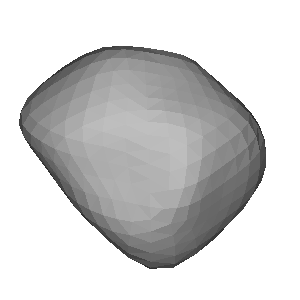2010-09-20 / TYC 1912-00350-1 / (42) Isis
| # | OBS | Observer | Occ | Meth. | Instr. | CC | TSRC | UT1 | UT2 | UT3 | UT4 | UT2E | UT3E | Dur. | Chrd |
|---|---|---|---|---|---|---|---|---|---|---|---|---|---|---|---|
| 1 | show | Helmut Michels | O+ | VID | M150 | DE | RAD++ | 03:00:00 | 04:16:40.20 | 04:16:43.00 | 04:20:00 | 0.10 | 0.10 | 2.80 | 77.0 |
| 2 | show | Otto Farago | O+ | VID | M406 | DE | RAD++ | 04:14:45 | 04:16:41.90 | 04:16:43.72 | 04:18:45 | 0.02 | 0.02 | 1.82 | 50.1 |
| 3 | show | Maurice Audejean | O- | CCD | M320 | FR | 04:11:02 | 04:21:02 | |||||||
| 4 | show | Jean Vilar | O- | CCD | M200 | FR | 04:13:02 | 04:21:03 | |||||||
| 5 | show | Eberhard Bredner | O- | VID | M200 | FR | 04:10:00 | 04:25:00 | |||||||
| 6 | show | Oliver Kloes | O- | VID | M254 | DE | 04:12:31 | 04:18:15 |
6 observations found in db: euraster
Available (probably) matching predictions (click on the link to switch):| JPL#124 : 5d443fa4-8af6-41e0-a3d6-783a350b5223 [db: observed] |
Using prediction 5d443fa4-8af6-41e0-a3d6-783a350b5223 for map and profile fit
| Ellipse and circular profile fits to the timings (chords) |
|---|
|
|
Auto-Fit Result: X0,Y0 = -340.4, 9.2 km Circular diameter = 119 km From 2 chords (VID) You can enter space separated chord numbers (example: 11 4 8) or a method like VIS to ignore all visual timings, or a time source like RAD and NTP (but not GPS). If the plot disappears, then there are less than 2 chords left (too much ignored, go back with browser). Check SiMDA for size and mass data. Check Johnston Archive for satellites. |
Sky projection (artificial light) for occ. time: 2010-09-20, 04:15 UT (JD = 2455459.677)
| DAMIT | Q | P (h) | λ, β | JD0 | JD-JD0 | φ0 | Version | Modified | Vol-equiv D | Cmnt |
|---|---|---|---|---|---|---|---|---|---|---|
| # 315 | None | 13.584 | 106°, 40° | 2.440688e6 | 14771.7 | 0.0° | None | 2013-07-24 | 97.0 +/- 10.0 km | 2011-04-21 |
| # 1841 | 4.0 | 13.584 | 108°, 44° | 2.440688e6 | 14771.7 | 0.0° | None | 2017-09-21 | 104.0 +/- 4.0 km | 2017-09-21 |


Image size: 300px. Transparent image background for copy & paste
| Map with groundtrack and observer stations |
|---|
| Event Details |
|---|
Occultation UUID [and DB] : 5d443fa4-8af6-41e0-a3d6-783a350b5223 [observed] Occultation Date + Time : 2010-09-20 at 04:18:40 UT +/- 0.0 min [1] Object Designation : (42) Isis Orbit Class : MBA Star Designation : GDR3 0866991104918746624 Star Coordinates (ICRF) : RA = 07 43 35.1666, DE = +22 42 48.336 [2] Star Magnitudes : G = 9.21 mag, RP = 8.47 mag, BP = 9.83 mag Object Magnitude : V = 13.29 mag Estimated Magnitude Drop : 4.1 mag Estimated Max. Duration : 3.6 sec Object Mean Diameter : 100 km (src: astorb) Speed of the shadow : 27.5 km/s Elongation to Moon & Sun : 151° (sunlit = 91%), Sun = 63° Cross-track uncertainty : 1.0 mas = 2 km = 0.02 path-width (1-sig) RUWE and duplicate source : 1.37 mas, dup.src = 0 (0:false, 1:true) Ephemeris Reference : JPL#124 Object is a Gaia mass determination target ! [1] time t0 of closest geocentric approach c/a, [2] including proper motion until t0 |
| More Data and Informations |
|---|
(If error 404: link not valid which means no data available)
| Aladin Sky Atlas |
|---|
| Aladin Lite direct link (has Gaia overlay) |